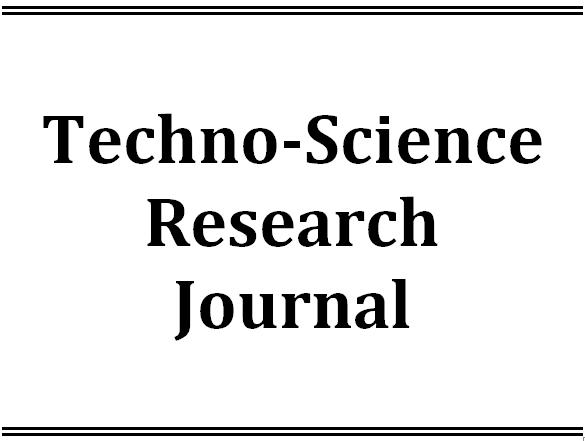Latest Issue
Empowering Education with Online Khmer Handwritten Text Recognition for Teaching and Learning Assistance
Published: August 30,2025Undergraduate Student Dropout Prediction with Class Balancing Techniques
Published: August 30,2025Status of Seawater Quality at Koh Rong Island, Sihanoukville, Cambodia
Published: August 30,2025Low-Complexity Detection of Primary Synchronization Signal for 5G New Radio Terrestrial Cellular System
Published: August 30,2025Word Spotting on Khmer Printed Documents
Published: August 30,2025Tuning Hyperparameters Learning Rate and Gamma in Gym Environment Inverted Pendulum
Published: August 30,2025Examining Passenger Loyalty in Phnom Penh Public Bus System: A Structural Equation Modelling Approach
Published: August 30,2025Prediction on Load model for future load profile of Electric Vehicle charging demand in Phnom Penh
Published: August 30,2025Economic Study on Integrating PV-DG with Grid-Tie: Case Study in Cambodia
Published: August 30,2025Identification of Pesticide Contamination in Water Sources Surrounding Agrochemical-Free Rice Farming in Battambang Province
-
1. Food Technology and Nutrition Research Unit, Research and Innovation Center, Institute of Technology of Cambodia, Russian Federation Blvd., P.O. Box 86, Phnom Penh, Cambodia
Received: August 11,2022 / Revised: / Accepted: October 19,2022 / Available online: December 31,2022
Pesticide application is a critical factor in the conventional farming system to improve crop protection and yield during growth stage until post-harvest. The agrochemical residue in food product is a serious problem for consumer and also pollutes the local environment like air, soil, and water sources. Water is the main constituent for both conventional and organic paddy farming. Thus agrochemical-free paddy farming can contaminate with pesticide residue from the surrounding environment. In this study, the agrochemical-free paddy field experiment locates at Research and Training Farm, National University of Battambang (NUBB), Battambang, Cambodia. The main purpose of the present investigation was to identify the pesticide residues in common water sources of the agrochemical-free paddy field. Water samples were collected in paddy fields, canal system and nearby upstream of the NUBB’s farm in 2021 and 2022. Thirteen collected water samples were analyzed using multiresidue pesticide analysis. Water samples were extracted by solid-phase extraction (SPE) and analyzed by gas chromatography-mass spectrometry (GC-MS). Recovery studies were performed at 1 μg.L-1 fortified level. Twenty-one out of 34 reference pesticides presented satisfy range 60-120 % of recovery rate with relative standard deviation, RSD < 30 % at the fortified level. The remaining 13 compounds gave the recovery yield below 70 % with RSD < 20 %. Twenty out of total pesticide standards had a limit of detection (LOD) and limit of quantification (LOQ) less than 0.01 and 0.0333 μg.L-1, respectively. After multiresidues pesticide analysis, azoxystrobin, biphenyl, chlorfenapy and methyl parathion were detected in paddy water and water from the canal system. However, 2-phenylphenol, isoprothiolane and terbcarb (mbpmc) were not in the list of 34 reference standards. 2-phenylphenol and isoprothiolane are slight to moderate hazardous while terbcarb (mbpmc) is an obsolete pesticide in the WHO classification. The abovementioned pesticide compounds were detected in water collected from paddy fields and different points in the canal system. This means that the surrounding environment contaminates agrochemical-free paddy fields through agricultural activities and water sources. Further analysis of other samples like paddy grain, soil and sediment should be considered.

